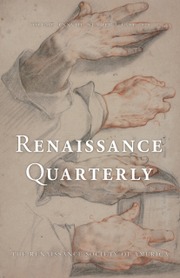This book intends to be the first comprehensive monograph-length study of printing in Wittenberg during the early Protestant Reformation. There Martin Luther publicized his ideas about Christianity, and there, in the service of those ideas, he became the second-most published author in European history. The Wittenberg printing industry met a transformative perfect storm of an ambitious, culturally aware elector of the Holy Roman Empire; his Renaissance-inspired establishment of a new university and printing press; and his employment of Luther at that university while he wrestled with a fundamental crisis of faith. The author of this book readily acknowledges that no study so vast could be undertaken prior to digitized library collections, databases, catalogues, and other electronic resources. With these tools, they set out to rectify lots of nevers by discovering lots of firsts.
The chapters presented here are an amalgam of several disciplines—analytical bibliography, art history, material culture of the book, economic and business history, biography, political history of early sixteenth-century Saxony, and history of the Bible as book, to name only a few. This all-embracing approach yields voluminous information. One highlight is the exposition of relationships among the Wittenberg business community and the painting, engraving, and printing operation of the artist Lucas Cranach. Also revealed are the printing networks that connected the Wittenberg industry with major Empire printing centers, a network formed and supported by a complex web of blood kinship and intermarriage.
This study affirms that the printing business operated in Wittenberg as it did in most of early modern Europe, with small pamphlets, flügshriften, and broadsides subsidizing large books like Lutheran Bibles and biblical commentaries to which most economic resources were devoted. A few other points of interest are the porous, symbiotic nature of paintings, drawings, woodcuts, and title-page borders (not to mention the relationship between text and image); the complicated internal workings of printers’ and publishers’ finances; the mobility of printers, printing tools, and printing businesses; and the large number of not only editions but also of sheets printed by the Wittenberg industry.
Perhaps most vividly depicted is precisely how integral Luther himself was to every aspect of Wittenberg printing. Because of him, it became a Europe-wide enterprise, even an empire. His prolific writing provided ideal fodder for printing presses. He lived in close proximity to printing workshops and was extraordinarily involved in the production of his works. His personal finances entwined with those of various printers and printing operations. The demand for his writings attracted a larger number of printers to Wittenberg, and he consciously employed as many of them as possible. His personal relationships were valuable to Wittenberg printers—for example, that with Philip Melancthon, the second-most printed author in Wittenberg. He used his political connections, such as that with the Elector, to advocate and intervene for various printers on quite a few occasions. Luther’s significance to the printing industry as demonstrated here might move in a definitive direction the debate over whether printing caused the Reformation or whether the Reformation ensured the success of printing.
Multiple images, charts, graphs, and tables punctuate this text, allowing readers to engage with the formidable research through comparison. Two appendixes include a catalogue of 593 pirated editions of Wittenberg imprints and a concordance of USTC – VD16 entries. A twenty-eight-page bibliography, compact index, and thirteen color plates of Cranach paintings round out the book.
Admirable as this study is in scope of research and volume and value of information presented, there are a few issues with it. Due to the extensive research, the text requires copious footnotes, where it is easy for the reader to get lost. Perhaps not surprisingly, the organization of the argument and the book as a whole is somewhat convoluted, so the writing can be repetitive. Although amazing revelations are densely packed into this book, the reader can easily lose sight of the forest for the trees. Nevertheless, the book is definitive regarding early Reformation printing in Wittenberg, and it is a major contribution to the study of early modern European print culture that cannot be overlooked.



